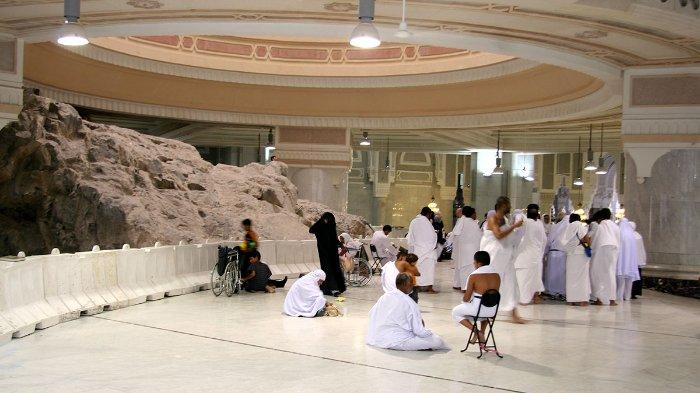Did you know there is an interesting story about the history of sa’i or jogging between Bukit Shafa and Marwah which is a chain of umrah and hajj?
One of the pillars in performing Umrah and Hajj is Sa’i. The worship of Sa’i is one of the pillars of Umrah and Hajj which is performed by jogging or walking hurriedly between Shafa Hill and Marwah which is 405 meters apart seven times.
The Sa’i procession is carried out from the hill of Safa. While in Safa, the congregation should climb up the hill towards Marwah and then face the Kaaba. Sa’i worship which is currently carried out by pilgrims and Umrah has its own history and meaning. To find out more about the history and meaning of sa’i worship, here is an explanation.
Story of Sa’i History: Siti Hajar, Prophet Ibrahim AS, and Prophet Ismail AS
The history of sa’i cannot be separated from the story of the wife of Prophet Ibrahim who is also the mother of Prophet Ismail, namely Siti Hajar. The history of sa’i between Mount Safa and Marwah began when Siti Hajar tried to find water for her thirsty son Ismail.
At that time, Nab Ibrahim was ordered by Allah SWT to leave his wife and also his child in a very barren desert. Siti Hajar who felt confused and sad about her husband’s departure plan asked “Where are you going Ibrahim?” .
Hearing the question from his wife, Prophet Ibrahim did not answer and remained silent. Then Siti Hajar added “Is it up to you Ibrahim to leave us both in a lonely and barren place like this?”.
Ibrahim still did not answer and did not turn his head at all. Then Siti Hajar said again, “Is this an order from Allah SWT?”. At that moment, Prophet Ibrahim answered, “Yes”. Hearing the answer, Siti Hajar’s heart became calmer. Then later Siti Hajar said again, “If that is true, surely God will never waste our fate.”.
Prophet Ibrahim then left Siti Hajar and Ismail by providing them with food and drink. However, the provisions given by Ibrahim eventually ran out. Siti Hajar then tried to find water for her son.
From where she was, Siti Hajar saw a hill, namely Bukit Shafa. He then rushed to find water towards the top of Bukit Shafa, but there was nothing. It didn’t find anything. Then he rushed down towards Bukit Marwah, but nil too. Siti Hajar returned again to Bukit Shafa, and returned again to Bukit Marwah. And so on up to seven times.
After seven times rushing from Safa to Marwah and vice versa, from Bukit Marwah Siti Hajar heard the sound of gurgling water. He then approached the direction of the voice. How surprised he was when he found jets of water rushing out of the ground under the soles of Prophet Ismail’s feet.
Now the water is then called zamzam water. And until now, the water of zam-zam has never receded or dried up. The Arabs who crossed the area then decided to stay and it became today a thriving City of Mecca.
In that place then performed Hajj and Umrah by all Muslims around the world. And the Siti Hajar incident was then used as the basis for the Sa’i worship which is currently being carried out during the Umrah or Hajj pilgrimage.
the meaning of Sa’i
Linguistically, Sa’i means struggling or trying. But later, the meaning of sa’i was developed into a life struggle carried out for the individual, family, and society. Sa’i is interpreted as a life struggle that never gives up and does not give up. That life must be lived with patience, piety, and trust in Allah SWT.

